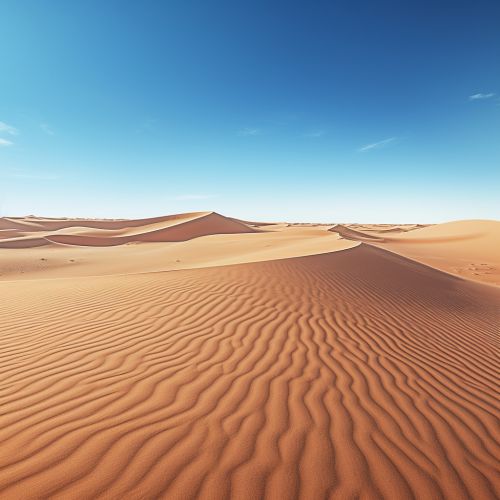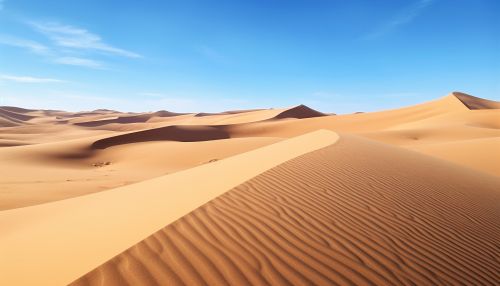Rub' al Khali
Geography
The Rub' al Khali or Empty Quarter is the largest contiguous sand desert in the world, encompassing most of the southern third of the Arabian Peninsula. The desert covers some 650,000 square kilometers (250,000 sq mi) including parts of Saudi Arabia, Oman, the United Arab Emirates, and Yemen. It is part of the larger Arabian Desert.


Topography
The terrain is covered with sand dunes with heights up to 250 meters (820 ft), interspersed with gravel and gypsum plains. The sand is of a reddish-orange color due to the presence of feldspar. There are also brackish salt flats in some areas, such as the Umm al Samim area on the desert's eastern edge.
Climate
The Rub' al Khali has a hyper-arid climate, with temperatures reaching as high as 56.7 °C (134.1 °F). The average rainfall is less than 35 mm (1.4 in) per year, making water extremely scarce. The desert's inhabitants are thus mostly nomadic Bedouin tribes who traverse its vast expanses in search of grazing for their camels and goats.
Biodiversity
Despite the harsh conditions, a variety of flora and fauna thrive in the Rub' al Khali. Plants such as the date palm (Phoenix dactylifera) and the desert thorn (Lycium shawii) are commonly found around the desert's periphery. Fauna includes the Arabian oryx (Oryx leucoryx) and the sand gazelle (Gazella subgutturosa marica), both of which are adapted to the desert environment.
Human Settlement
The Rub' al Khali has been inhabited by humans for thousands of years. Archaeological evidence suggests that trading routes once crossed the desert, and that farming communities may have existed in the region in wetter periods. Today, the desert is home to Bedouin tribes, but it is also a site of oil extraction, which has led to the establishment of industrial complexes.
